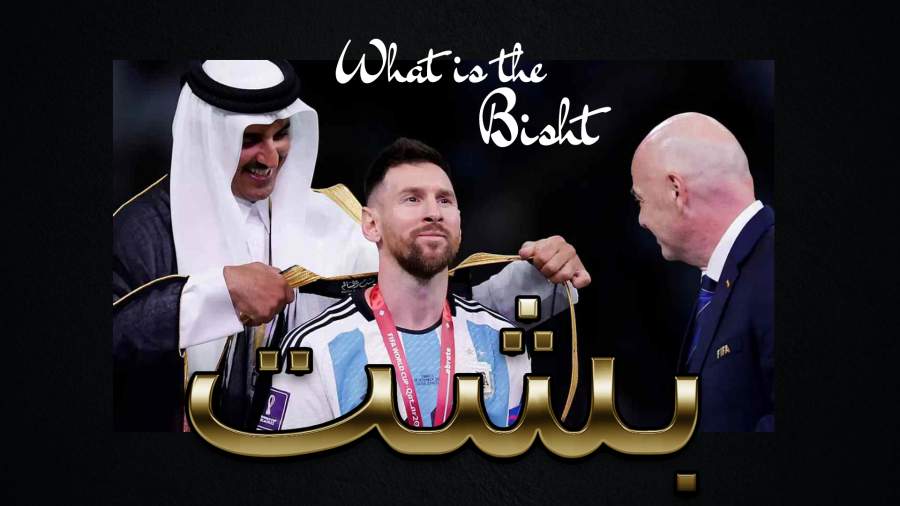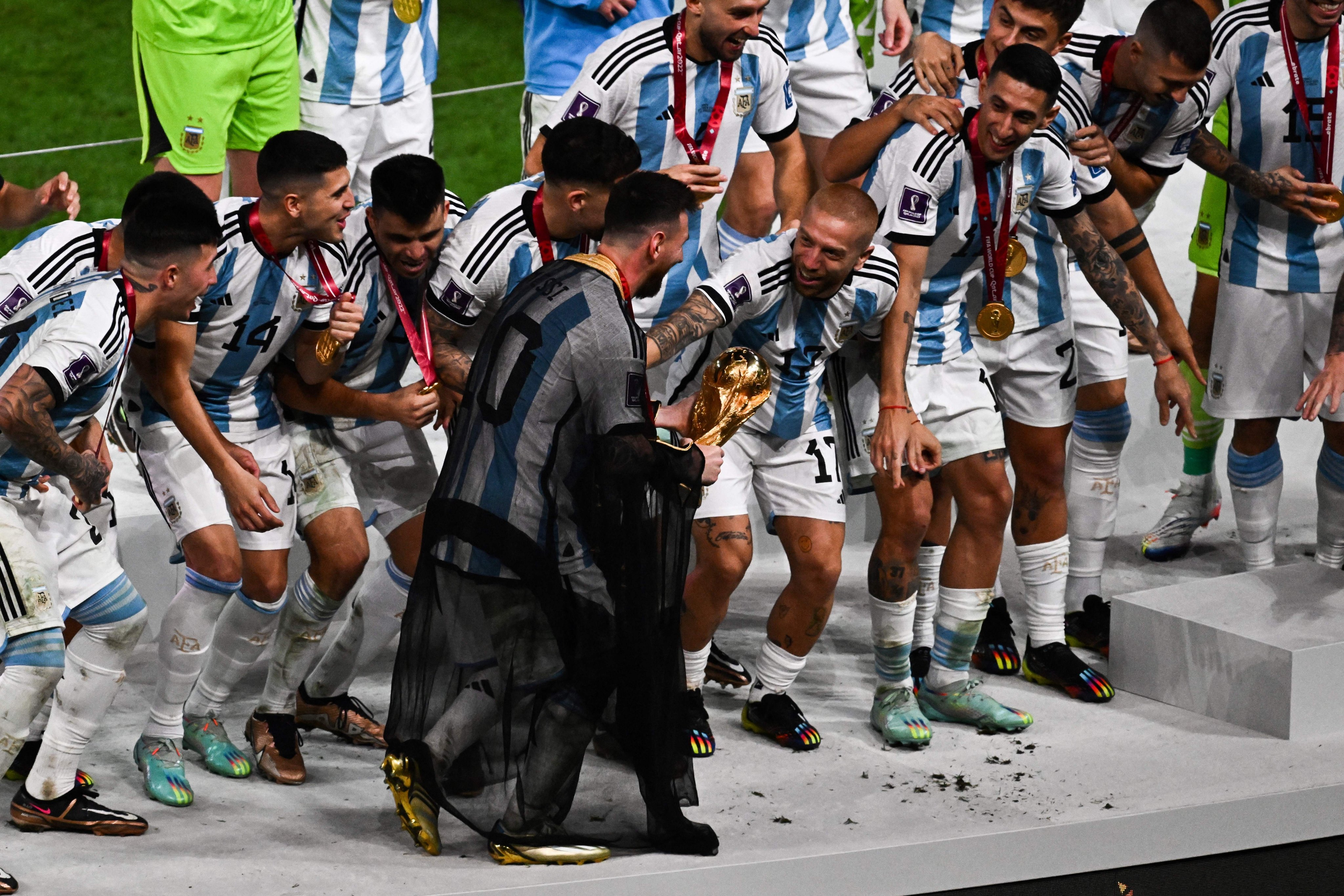Tue 20 December 2022:
At the World Cup trophy presentation after Argentina’s win over France in the final on Sunday, Lionel Messi was offered a bisht, a traditional Arab cloak, to wear by the emir of Qatar.
Messi allowed Sheikh Tamim bin Hamad Al Thani to place the robe on his shoulders before taking the World Cup trophy from FIFA President Gianni Infantino and lifting it in front of his ecstatic teammates.
What is a bisht?
The bisht is a long cloak made out of light, often sheer, material with trimming made out of real gold that is worn over a white thobe.
Primarily worn in the Gulf, it is a garment that has been worn for centuries during special occasions. It is viewed as a sign of appreciation and respect and is typically worn by top officials such as politicians, sheikhs and other high-status individuals.
What is special about the bisht?
Mustafa Baig, a lecturer in Islamic studies at the University of Exeter, told the dpa news agency that the bisht is a formal robe worn by royalty, dignitaries, grooms on their wedding day, and graduates at graduation ceremonies.
“So only a select few people would actually wear the bisht,” he said. “They basically honoured him [Messi] by putting it over his shoulders. It’s like a mark of honour, and just kind of a cultural welcoming and a cultural acceptance.”
Baig said it is also representative of Qatar’s national dress – but only on important occasions.
Baig said he saw it as “an embrace by Messi of the local culture”, adding that it was “a pretty cool thing” for Qatar to do and “smart thinking” on their behalf.
Bisht also known as the mishlah, aba, or abaaya, the ankle-length traditional cloak is not unique to Qatar, and can be found in different forms across the Middle East.
Most notably it is worn by a groom on his wedding day, or by royalty on formal occasions, and can be even worn at funeral receptions.
The robe depicts status and regality, and is also worn by imaams – especially in the Gulf – when they lead prayers.
What are bishts made of?
The best quality bishts are made from spun camel hair, which creates a fine soft fabric, similar to cashmere, while more affordable versions are produced, using cotton and polyester. The fabric is then dyed, most of the time in black, but also in brown and white.
A striking gold stitching, known as zari, is used to embroider the cloak with threads, usually made of silk, or of gold and silver thread. Such patterns usually follow the neckline – or the gown’s edges.
What does bisht mean?
Some say the word bisht, is derived from the ancient Akkadian spoken in Mesopotamia, modern-day Iraq, where the word bishtu meant, “nobility”, others suggest the word is from the Persian word, pusht, which means, “to be, at the back”.
The cloak is not only popular in the Gulf, but is worn across the Arab world, among Muslims, as well as Christians and Jews.
The Prophet Muhammad, is said to have worn a brown bisht, that is still on display at the Topkapi Palace museum in Istanbul.
There are even some academics, who claim that the gowns worn by university graduates, at ceremonies across the world, were originally inspired by the bisht.
According to these historians, the robes were first awarded to graduates, at Morocco’s Al-Qarawiyyin University in the ninth century, in order to distinguish a scholar, from the rest of society.
What did the organisers say?
Hassan al-Thawadi, secretary-general of Qatar’s World Cup organising committee, said: “It is a dress for an official occasion and worn for celebrations. This was a celebration of Messi.
“The World Cup had the opportunity to showcase to the world our Arab and Muslim culture. This was not about Qatar, it was a regional celebration.”
SOURCE: INDEPENDENT PRESS AND NEWS AGENCIES
___________________________________________________________________________________________________________________________________
FOLLOW INDEPENDENT PRESS:
TWITTER (CLICK HERE)
https://twitter.com/IpIndependent
FACEBOOK (CLICK HERE)
https://web.facebook.com/ipindependent
Think your friends would be interested? Share this story!






